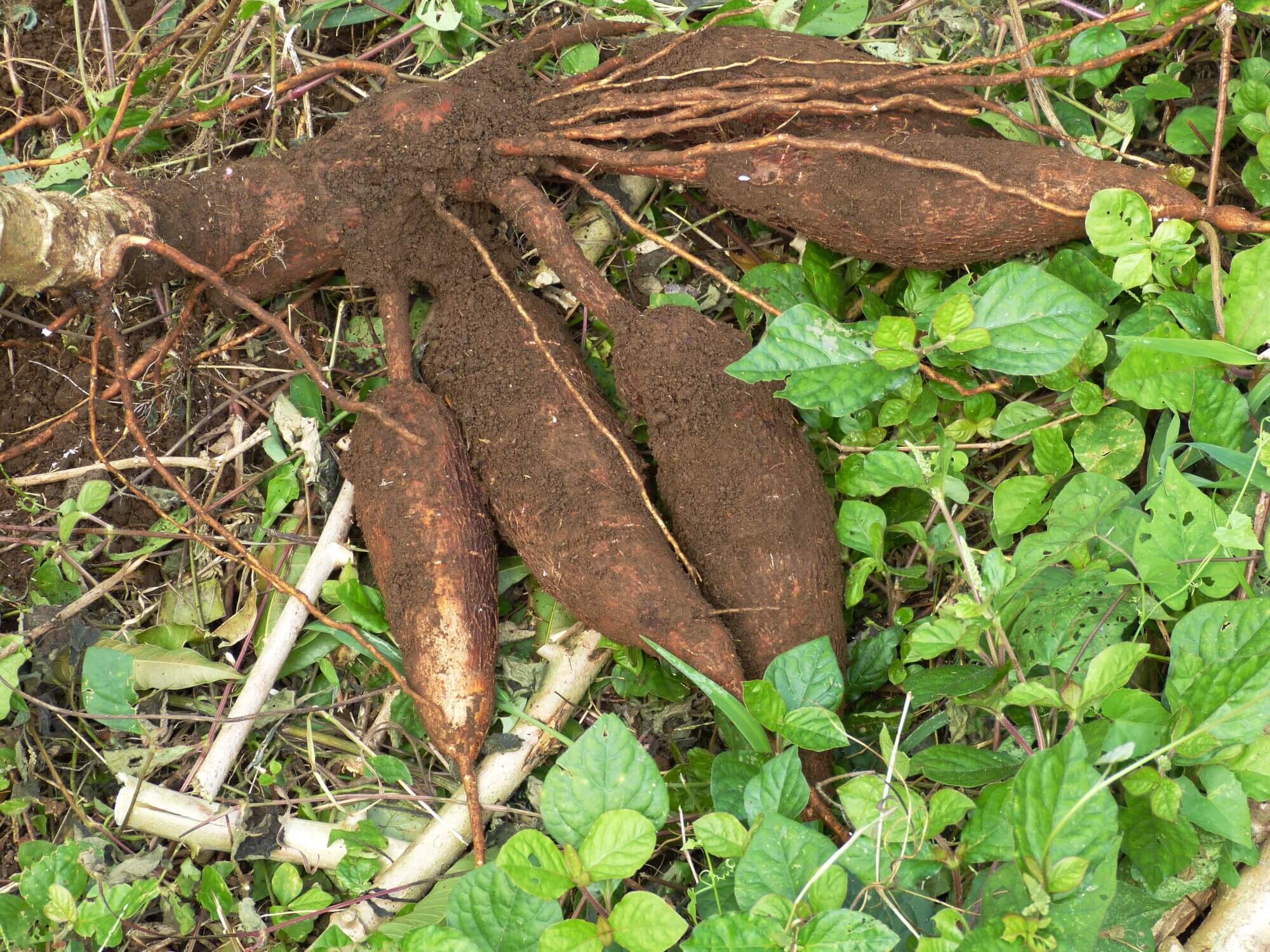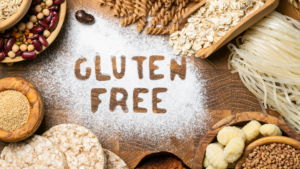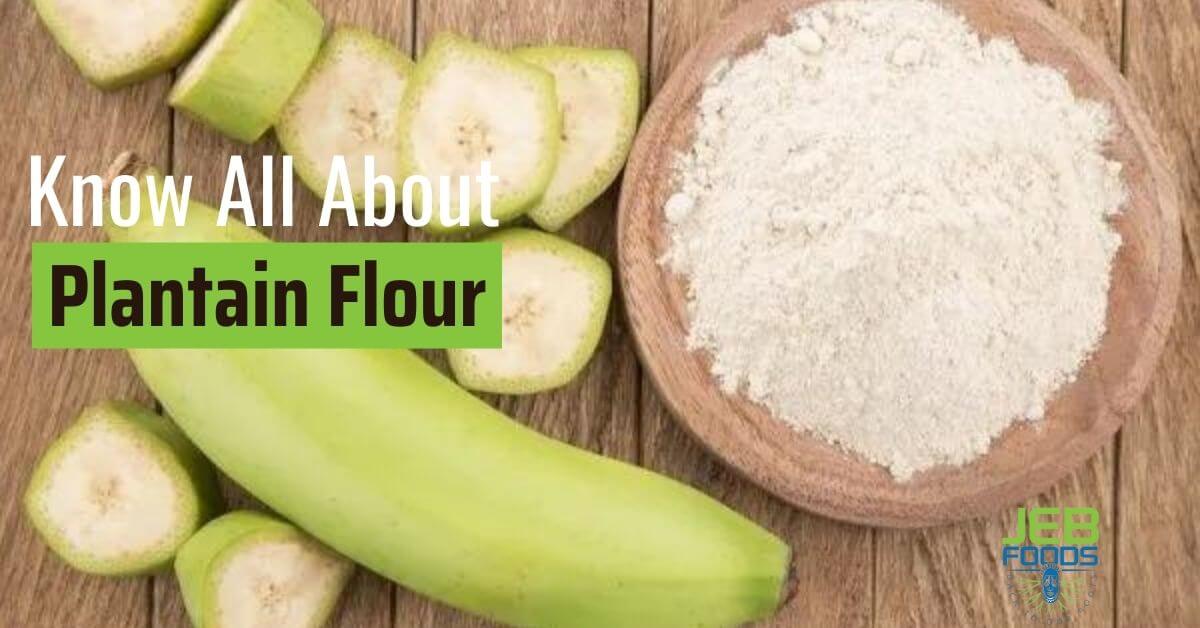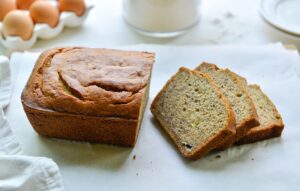If you follow a paleo, AIP, or vegan diet, cassava can be a great addition to your diet plan. Read to learn about cassava benefits, uses, and facts.

Table of contents
Table of Contents
Toggle- What Is Cassava?
- Where Is Cassava Grown?
- How Is Cassava Cultivated?
- Is Cassava Flour Healthy to Eat?
- What Are the Benefits of Cassava Flour?
- Do People Cook With Cassava Flour?
- What Does Cassava Flour Taste Like?
- What Is the Difference Between Cassava and Yuca?
- Is Cassava Gluten-Free?
- Is Cassava Okay for Keto Diets?
- Reap the Many Cassava Benefits in Your Diet
- ORDER CASSAVA FLOUR HERE
Advances in nutrition have lead to people cutting back on refined grains and leaning toward gluten-free substitutes in droves. Some choose this diet due to food sensitivities or Celiac disease. For others, the benefits of a Paleolithic diet are too great to ignore.
Unfortunately, most alternative flours have a dry, crumbly texture and can even trigger other food sensitivities. Enter cassava, an ancient plant that can completely replace wheat flour without the downsides of most gluten-free alternatives.
What is cassava and why should it become a staple in your diet? To learn more about the many cassava benefits and how to use this amazing plant, keep reading.
What Is Cassava?
Cassava is an edible tuberous plant much like a potato or yam. When it comes to feeding the human population, this crop is the 6th most vital on earth. It has fan-shaped leaves that can grow as short as herbs or as tall as small trees, depending on the variety.
This plant produces a sugar-based derivative of cyanide called hydrocyanic acid, making it poisonous to consume in raw form. Thankfully, the ingenuity of indigenous peoples throughout history means that we now understand how to refine cassava into a form that’s safe to eat. This process involves a complex chain of peeling, grating, pressing, and heating the plant’s roots.
Where Is Cassava Grown?
According to archaeological records, researchers believe that the first cassava plants were grown by the Maya in Yucatan between 8,000-10,000 years in the past.
Since then, the plant has spread across the globe and can be found in a variety of tropical regions. It’s still a staple crop in much of South and Central America as well as the Caribbean. Today it’s also prolific in Sub-Saharan Africa, India, China, and many East Asian countries.
How Is Cassava Cultivated?
Cassava crops prefer to grow in warm, tropical environments that maintain that state for at least eight months of the year. It needs a decent amount of even rainfall to prosper. It’s drought-tolerant and can grow in cooler or drier conditions, but it takes much longer—up to eighteen months in some cases—to reach maturity.
Cassava cultivation is interesting because it grows via propagation. This means that even after harvesting the tuberous root of the plant, you can continue to grow new plants with stem cuttings. In many environments, this makes it more sustainable and easy to produce than seed-based crops.
Is Cassava Flour Healthy to Eat?
Despite its inherently toxic nature, refined cassava is quite healthy to eat. This plant is low in fat but high in satisfying carbohydrates, meaning it will keep you feeling full and energized. It also contains plenty of essential vitamins and minerals, including:
- potassium
- choline
- folate
- Vitamin A
- Magnesium
- Vitamin C
- Calcium
Some cassava-based products are also fortified with iron to combat anemia and other iron-deficient conditions around the world.
What Are the Benefits of Cassava Flour?
Due to its high nutrient content, the cassava flour benefits are too numerous to name them all here. A few of the most significant health benefits of eating cassava include:
- promotes healthy skin and a bright complexion
- improves wound healing and may decrease the appearance of scars/spots
- speeds up hair growth and combats hair loss
- gentle on the digestive system and can improve digestion
- can improve eye health and vision
- reduces inflammation and can improve associated conditions like rheumatoid arthritis
- boosts your immune system
- can contribute to better brain health
- high dietary fiber can lower blood pressure
One of the biggest health benefits you can get from cassava, though, is a reduction in your risk for conditions associated with low potassium and magnesium. These include:
- heart disease
- diabetes
- stroke
- osteoporosis
- Alzheimer’s disease
- migraines
- restless leg syndrome
Because of all these benefits, cassava is touted as a panacea by some. Even though it isn’t a true cure-all, adding this fantastic plant to your balanced diet will help you stay healthy and may even improve some of your pre-existing conditions.
Do People Cook With Cassava Flour?
People have been cooking with cassava for thousands of years, and it continues to be a popular food around the world today. In fact, if you’ve ever enjoyed tapioca pudding or bubble tea, you’ve already eaten cassava before! Tapioca products like flour, flakes, and pearls all come about by extracting the plant’s unique starch.
People also cook cassava roots whole, treating them much like potatoes or yams. They can be baked, steamed, boiled, mashed, fried, or even turned into delicious chips.
Perhaps the most versatile way to eat cassava, though, is by drying the root and grinding it into flour. The same starches that give tapioca its springy, gummy feel make it an excellent dupe for gluten-based flours. There are countless ways to use cassava flour, but here are some of our favorites:
- baked goods like brownies and cupcakes
- pancakes and waffles
- tortillas
- gravy and other thick sauces
- tempura batter
- pizza crust
- cookies
- dinner rolls
If you’re not sure how to use cassava in your own cooking, the internet is full of traditional and modern recipes to choose from. Doing a little recipe research is sure to leave you with plenty of inspiration.
What Does Cassava Flour Taste Like?
The cassava root itself is similar in texture to the white potatoes many of us are familiar with. After being cooked, it’s soft and creamy but still dense. It has a slightly grainy texture when chewed.
Cassava flour is a light powder that no longer has the mealiness of the whole root. Its flavor is mild enough to blend into most dishes without overpowering the other ingredients. On its own, the root has a subtle taste that many people describe as a combination of these traits:
- nutty
- earthy
- lightly sweet
- lightly bitter
Both whole cassava root and cassava flour blend equally well with mild and strong ingredients. In culinary terms, the cassava plant is nearly as close to a blank canvas as you can get, making it the perfect base for creative dishes.
What Is the Difference Between Cassava and Yuca?
The cassava plant goes by many different names around the world. It’s dubbed manioc or Brazilian arrowroot in some places and, once its starch is extracted, it goes by tapioca. Yuca (pronounced yoo-kah) is yet another name for cassava—specifically, the tuberous root portion.
Be careful not to confuse yuca with yucca, though. Despite the similar spelling, these are completely different plants. Yucca (pronounced yuh-kah) is a decorative plant that grows throughout much of the American southwest and areas of Mexico. While they can produce edible fruits, yucca plants don’t grow edible tubers like yuca.
Is Cassava Gluten-Free?
Yes! Cassava is one of the best grain replacements for people following a gluten-free diet.
Unlike other common replacement flours like almond or coconut flour, cassava flour contains natural non-gluten starches. This helps it form a “glue” that holds batters and doughs together in almost the same way wheat flour does. The result is a baked good that has that familiar springy bite, not the dry, crumbly texture associated with gluten-free foods.
Cassava flour also works well as a gluten-free, grain-free thickener in savory dishes. You can use it to batter and fry meats or vegetables as easily as you can toss a bit into a gravy or sauce.
Is Cassava Okay for Keto Diets?
Cassava may seem like the perfect wonder food by this point, and in many ways, it is.
It’s a staple in gluten-free, paleo, vegan, and Autoimmune Protocol (AIP) diets. As such, it’s easy to assume that it must be good for a keto diet as well. It’s even perfect for people who avoid grains due to food sensitivities and also have problems with common nut-based substitutes.
Unfortunately, a keto diet is the one style of eating that cassava has a hard time fitting into. Maintaining ketogenesis requires an almost zero-level intake of starches and carbohydrates. Cassava flour and its related products are all starch-based, making them far too high in carbohydrates to be keto-friendly.
Reap the Many Cassava Benefits in Your Diet
Whether you’re on a strict AIP diet, following the Paleo track, or would just rather cut back on your grain consumption, the many cassava benefits are hard to ignore. Not only is this ancient plant delicious, but it’s great for your health as well.
When you’re ready to stock up on cassava four, Jeb Foods has you covered. Along with cassava products, we also carry a variety of all-natural African health foods and dietary staples. Visit our shop to stock up today!




